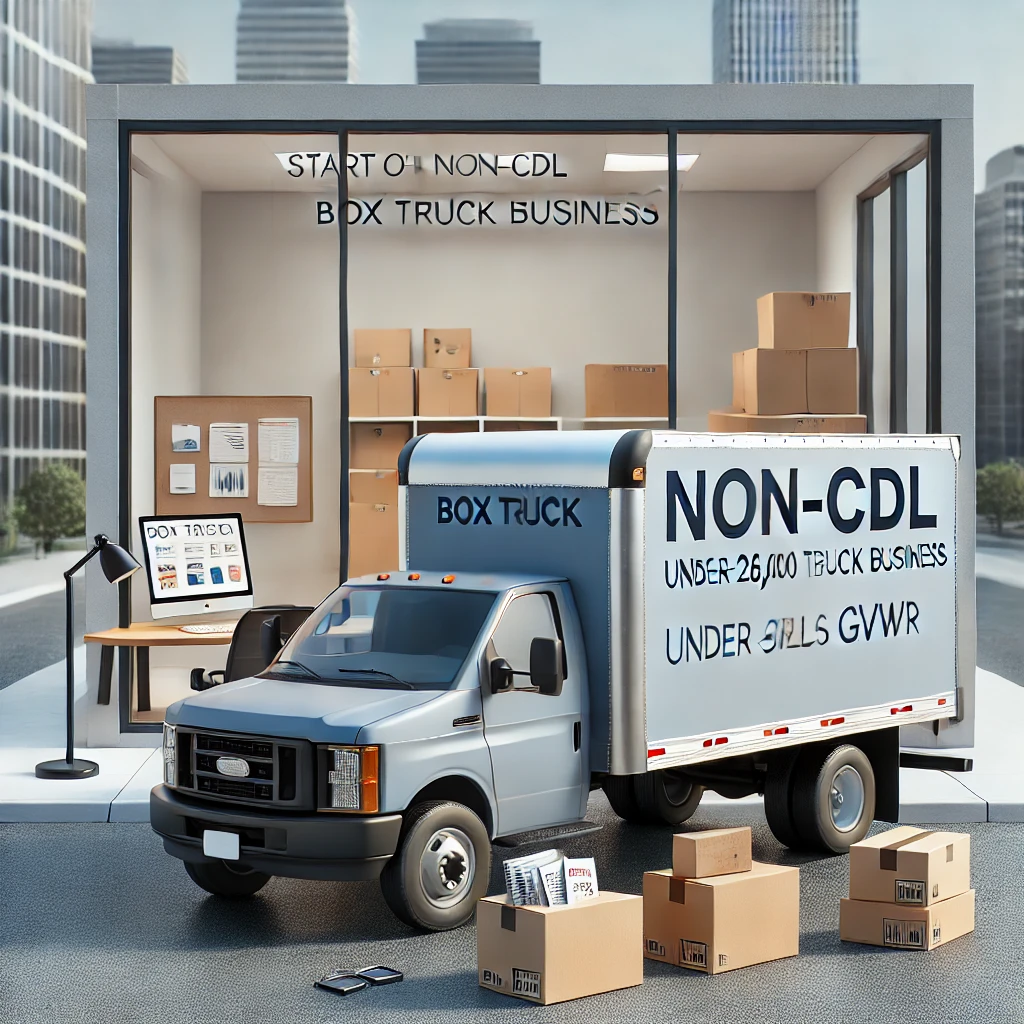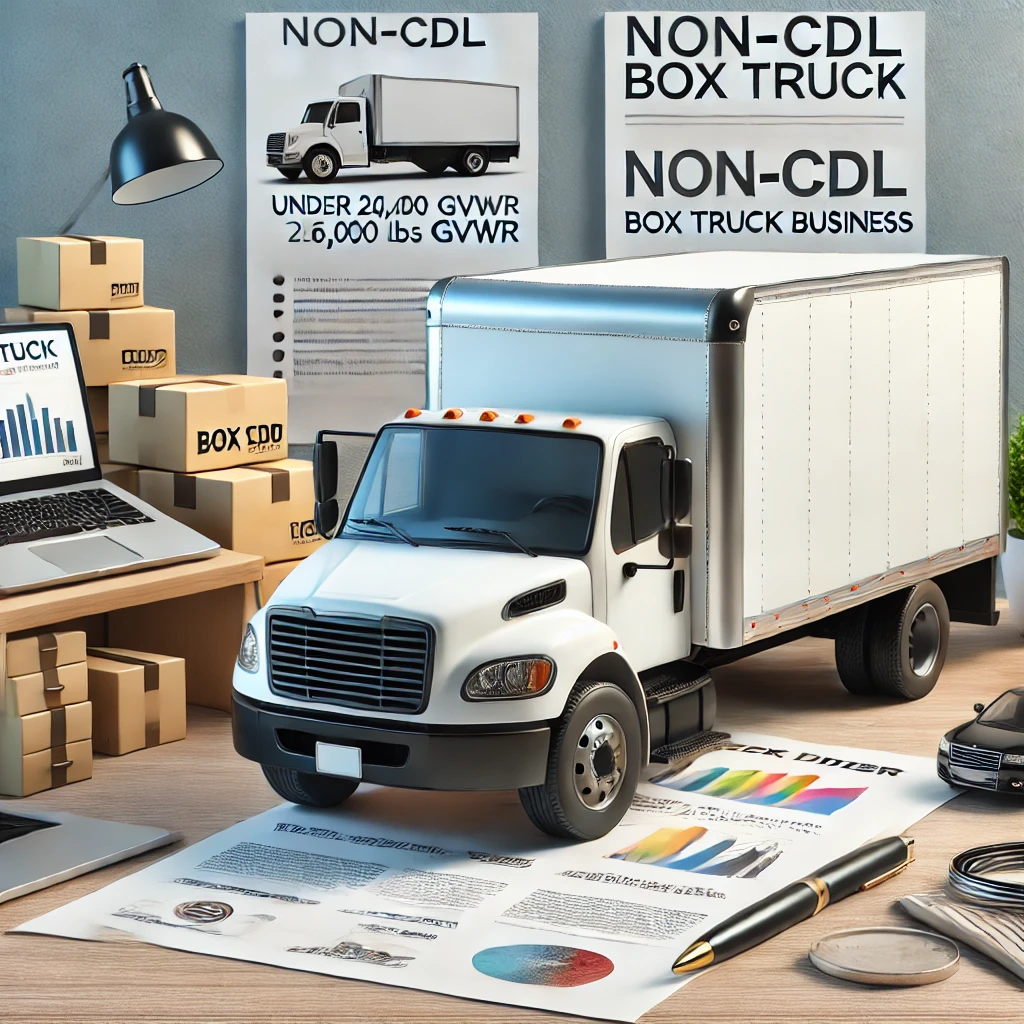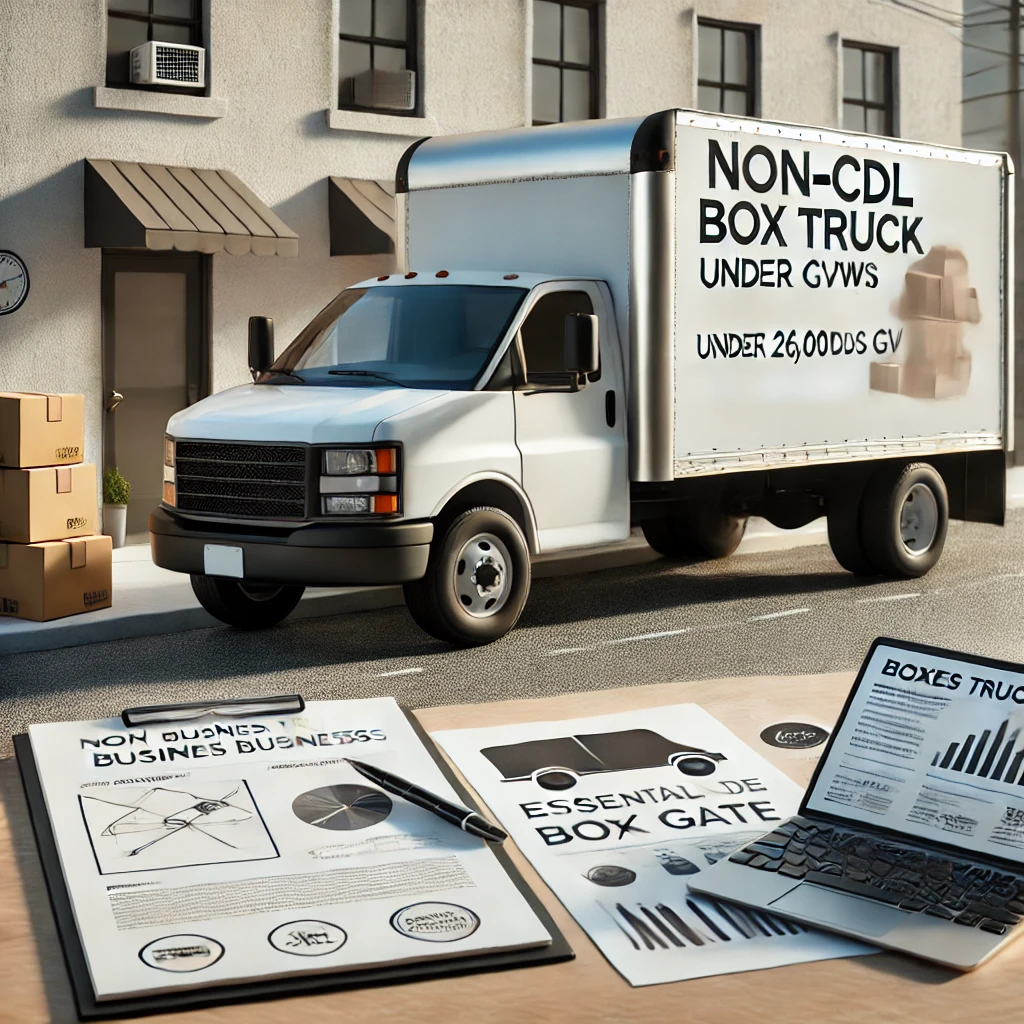Starting a Non-CDL Box Truck Business: Your Complete Checklist
Starting a non-CDL box truck business can be an excellent entry point into the transportation industry. This checklist will guide you through the essential steps to launch your business, focusing on trucks that don't require a Commercial Driver's License (typically under 26,000 lbs GVWR).

1. Business Planning and Setup
- Define your business niche (local deliveries, moving services, etc.)
- Conduct market research to identify demand and competition
- Create a business plan including financial projections
- Choose a business name and structure (LLC, Sole Proprietorship, etc.)
- Register your business with state authorities
- Obtain an Employer Identification Number (EIN) from the IRS
- Open a business bank account
2. Licensing and Permits
- Obtain a standard driver’s license (if you don’t already have one)
- Apply for a USDOT Number if operating interstate or hauling federally regulated commodities
- Check local regulations for any city or county business licenses
- Obtain any necessary permits for specific types of cargo (if applicable)
3. Vehicle Acquisition
- Research and select appropriate box truck models (under 26,000 lbs GVWR)
- Decide between new or used vehicles
- Consider financing options (loan, lease, or purchase outright)
- Ensure the truck meets all safety standards
- Install any necessary equipment (lift gate, tie-downs, etc.)

4. Insurance
- Obtain commercial auto insurance
- Secure general liability insurance
- Consider cargo insurance for goods in transit
- Look into non-trucking liability insurance for personal use of the vehicle
5. Operations Setup
- Establish a home base or office space
- Set up a system for booking and managing jobs
- Implement an accounting system for tracking income and expenses
- Create a maintenance schedule for your vehicle(s)
- Develop safety protocols and operational procedures
6. Marketing and Client Acquisition
- Create a professional website
- Set up social media profiles for your business
- Design business cards and basic marketing materials
- List your business on relevant online directories
- Network with potential clients (local businesses, real estate agents, etc.)
- Consider joining local business associations or chambers of commerce

7. Pricing and Financial Management
- Determine your pricing structure (per mile, per hour, or flat rates)
- Set up a system for invoicing and payment processing
- Establish a budget for operating expenses
- Plan for tax obligations (quarterly estimated taxes, etc.)
8. Compliance and Safety
- Familiarize yourself with FMCSA regulations for non-CDL drivers
- Implement a vehicle inspection routine
- Create a system for tracking hours of service (if required)
- Develop a plan for staying updated on industry regulations
9. Growth Planning
- Set short-term and long-term business goals
- Plan for potential fleet expansion
- Consider diversifying services as you grow
- Explore partnerships with other local businesses

10. Technology Integration
- Invest in a GPS system for navigation and tracking
- Consider using load boards or apps to find jobs (e.g., GoShare, Convoy)
- Implement a customer relationship management (CRM) system
- Use accounting software for accurate financial tracking
11. Personal Preparation
- Assess your physical fitness for loading/unloading
- Plan for long hours and potentially irregular schedules
- Develop time management and organizational skills
- Consider taking a defensive driving course
12. Legal Considerations
- Consult with a lawyer to review contracts and business structure
- Understand liability issues and how to protect yourself
- Set up proper contracts for clients and any potential subcontractors

Final Steps
- Do a final review of all checklist items
- Conduct a “soft launch” to test operations
- Gather feedback and make necessary adjustments
- Officially launch your non-CDL box truck business
Remember, while starting a non-CDL box truck business can be less complex than larger trucking operations, it still requires careful planning and execution. Stay informed about industry trends and regulations, focus on providing excellent service, and be prepared to adapt as your business grows.
